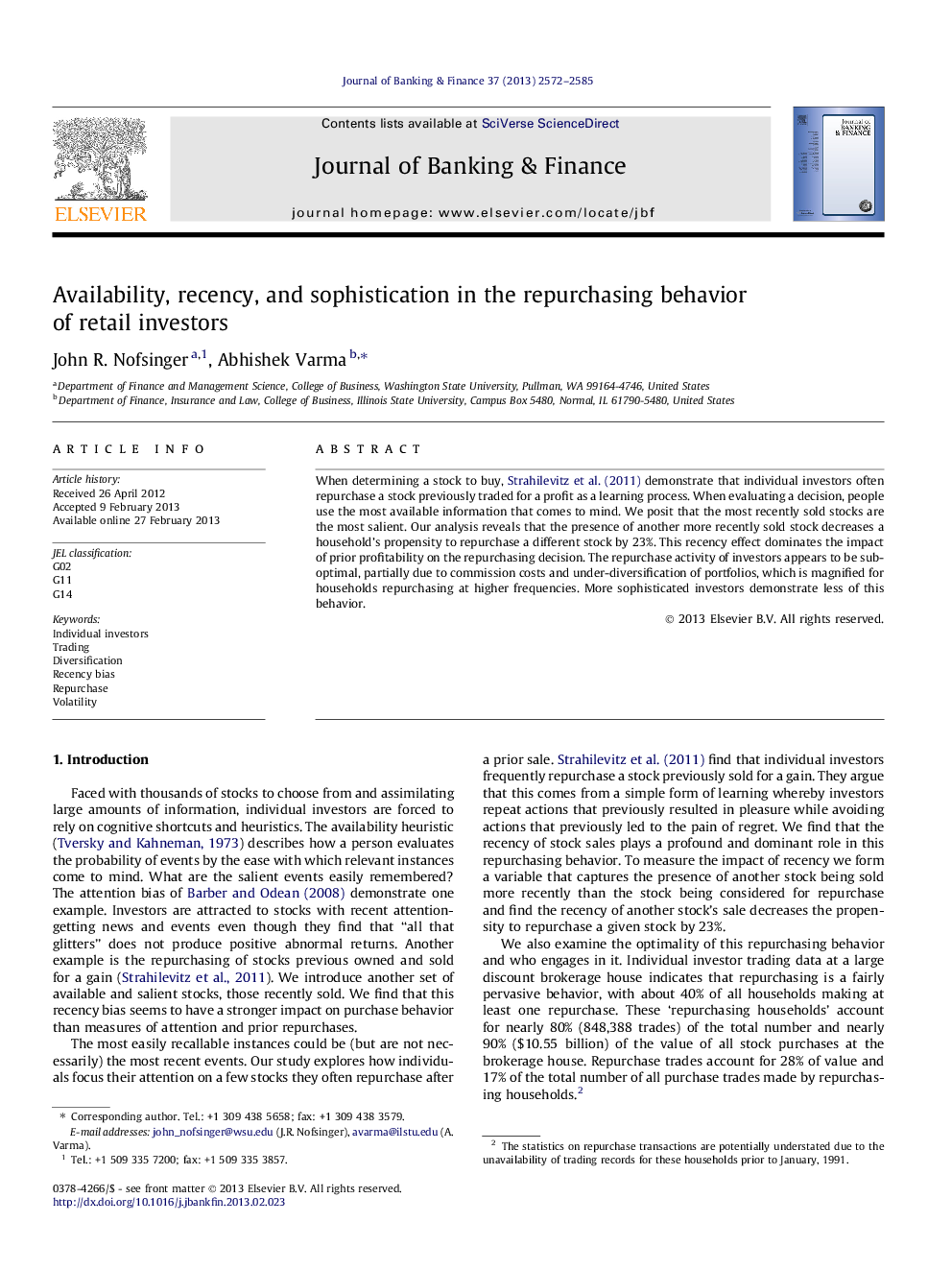| Article ID | Journal | Published Year | Pages | File Type |
|---|---|---|---|---|
| 5089259 | Journal of Banking & Finance | 2013 | 14 Pages |
When determining a stock to buy, Strahilevitz et al. (2011) demonstrate that individual investors often repurchase a stock previously traded for a profit as a learning process. When evaluating a decision, people use the most available information that comes to mind. We posit that the most recently sold stocks are the most salient. Our analysis reveals that the presence of another more recently sold stock decreases a household's propensity to repurchase a different stock by 23%. This recency effect dominates the impact of prior profitability on the repurchasing decision. The repurchase activity of investors appears to be sub-optimal, partially due to commission costs and under-diversification of portfolios, which is magnified for households repurchasing at higher frequencies. More sophisticated investors demonstrate less of this behavior.
⺠Individuals often repurchase a stock previously traded for a profit. ⺠While repurchasing, the most recently sold stocks are the most salient. ⺠While repurchasing, the recency effect dominates prior profitability. ⺠Repurchases appears to be non-information based are sub-optimal. ⺠More sophisticated individual investors demonstrate less repurchasing behavior.
